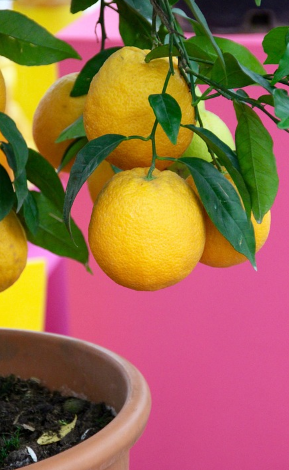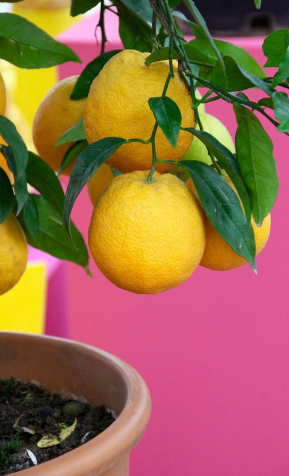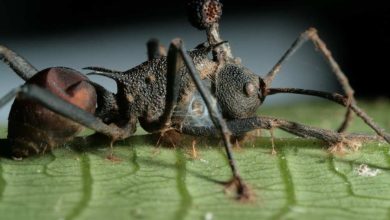How to grow a lemon tree in a pot and maintenance tasks

The lemon is the fruit of the lemon tree , Citrus x lemon . Citrus fruit trees are native to Asia and today they are grown practically all over the world. It is an evergreen tree.
Lemons are a fruit widely used to season, flavor and season different dishes, and we can use it in many recipes. In addition, it is important to highlight the benefits and properties of lemon and drinking water with lemon .
Although it is not necessary to have a garden or orchard, if you want to plant a lemon tree you must take into account very important issues such as the climate in your area and the space that you will be able to allocate to the lemon tree and based on these choose varieties that are are better suited, such as a miniature lemon tree for urban gardens or suitable for small spaces.
We also advise you which organic seeds to use , the best planters, growing boxes and tables for your garden and essential books to learn everything about organic gardening .
If you want to know how to plant a potted lemon tree to put it on your terrace, balcony or patio and add it to your urban garden, I give you some guidelines that will come in handy for its cultivation and maintenance and so that you can enjoy some great lemons ecological.
How to grow a lemon tree in a pot and maintenance tasks
 Pot for the lemon tree
Pot for the lemon tree
You will need a pot with a minimum depth of 80 cm, although if you opt for a miniature lemon tree it can be worth 50 cm. The lemon tree needs to develop the roots to have stability and a good grip.
Substratum
The substrate you choose must be suitable for organic cultivation and rich in organic matter. We must avoid substrates that become caked and do not drain irrigation water well. It is important that our substrate has good aeration.
Fertilized in the lemon tree
The lemon tree is a demanding fruit tree in terms of macro and micronutrients, therefore, we must provide substrates rich in organic matter. We must pay before planting the lemon tree and we will do it again in the second flowering. Worm guano and humus are especially beneficial in citrus cultivation.
Seeds and cuttings or cuttings
Unless you have a lot of experience and patience as a gardener, I do not recommend that you start with seeds, because it is a very long process and we do not always obtain a good result. It is preferable to obtain a tree with a root ball, a cutting or stake and go from there. A sapling with a root ball will resist transplantation better and will adapt better.
Light
Like a good citrus fruit, it likes sun exposure. Try to place it in an area where it can receive direct sunlight for several hours a day.
Read also other articles about organic garden
Climate for the lemon tree
In general, this fruit tree prefers Mediterranean and semi-tropical climates. There are few varieties of the lemon tree that can withstand frost well. If you live in a geographical area where there are frosts, choose a variety of lemon tree that has been grown in your area and that is already adapted to the weather. The climate is very important for flowering and fruit formation.
Lemon tree waterings
One of the most frequent causes that a lemon tree can get sick and even die is overwatering. This fruit tree usually has little tolerance to root suffocation, which is what happens when we water too much in a continuous way. The excess water from the pot does not drain, does not come out of it and remains stagnant around the roots. They begin to have problems breathing and obtaining nutrients from the earth, therefore, the tree begins to weaken and show signs of being in danger: the leaves fall, they turn yellow, there are problems with the fruits, etc. . When damage of this nature has occurred, it can be difficult to recover it.
To prevent this, we are going to water only when the land needs it. Put your index finger all the way into the ground. If you notice that there is moisture in the substrate, do not water. If you notice that the soil is dry, water moderately.
Keep in mind that during the hottest months you should water more frequently, while in the months with more humidity we will space the waterings. Also during the flowering and lemons formation period, the lemon tree will require more water.
As always, I recommend that you opt for drip irrigation. In addition to being more sustainable than other forms of irrigation, we help prevent damage from excess water.
Lemon tree pests and diseases
The most common pests that can occur during lemon tree cultivation are mites such as spider mites, leaf miners, fruit flies and whiteflies, aphids and mealybugs. The most frequent diseases are fungi, which can also appear when there is excess humidity. You already know that you can prevent and combat them in an ecological way with these with these tips .
Lemon tree pruning
It is a maintenance work of many fruit trees that aims to improve the performance and balanced distribution of the branches, improves ventilation and we favor the sun exposure of the fruits. Formation pruning in citrus fruit trees, in the lemon tree in this case, is carried out mainly after the spring harvest and is repeated at the same time of year annually. With this work we will leave three branches that will come out of the main trunk and we will eliminate the suckers that usually sprout from the armpits. In addition, this will limit the height of the lemon tree, which can reach 4 meters in some varieties.
Harvest
There are some varieties of lemon trees that have two blooms a year, so you can get two harvests a year. When you see that the lemon has a suitable color to consume it, you can already harvest it. And enjoy your organic lemons in a thousand ways!


![Photo of Albizia: [Characteristics, Cultivation, Care and Disadvantages]](https://www.complete-gardening.com/wp-content/uploads/2022/08/albizia-characteristics-cultivation-care-and-disadvantages-390x220.jpg)

